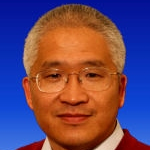Feature Papers in Ocean Engineering
A special issue of Journal of Marine Science and Engineering (ISSN 2077-1312). This special issue belongs to the section "Ocean Engineering".
Deadline for manuscript submissions: closed (15 April 2024) | Viewed by 25769
Special Issue Editor
Interests: offshore geotechnics; ocean engineering; coastal groundwater hydraulics; offshore wind energy
Special Issues, Collections and Topics in MDPI journals
Special Issue Information
Dear Colleagues,
We are pleased to announce the launch of a new Special Issue on “Feature Papers in Ocean Engineering”, with the aim of contributing to the publication of high-quality research on all the main aspects of Ocean Engineering—from ocean wave modelling aspects (ocean wave motion, fluid–structure interactions and tsunamis, etc.) to seabed mechanics and sediment transport, marine geotechnics and geohazards, ocean energy (offshore wind, wave energy, tidal current and combined marine energy) and field studies in ocean or marine environments. Submissions of original and high-quality research on all the abovementioned branches of ocean engineering are encouraged.
Prof. Dr. Dong-Sheng Jeng
Guest Editor
Manuscript Submission Information
Manuscripts should be submitted online at www.mdpi.com by registering and logging in to this website. Once you are registered, click here to go to the submission form. Manuscripts can be submitted until the deadline. All submissions that pass pre-check are peer-reviewed. Accepted papers will be published continuously in the journal (as soon as accepted) and will be listed together on the special issue website. Research articles, review articles as well as short communications are invited. For planned papers, a title and short abstract (about 100 words) can be sent to the Editorial Office for announcement on this website.
Submitted manuscripts should not have been published previously, nor be under consideration for publication elsewhere (except conference proceedings papers). All manuscripts are thoroughly refereed through a single-blind peer-review process. A guide for authors and other relevant information for submission of manuscripts is available on the Instructions for Authors page. Journal of Marine Science and Engineering is an international peer-reviewed open access monthly journal published by MDPI.
Please visit the Instructions for Authors page before submitting a manuscript. The Article Processing Charge (APC) for publication in this open access journal is 2600 CHF (Swiss Francs). Submitted papers should be well formatted and use good English. Authors may use MDPI's English editing service prior to publication or during author revisions.
Keywords
- marine geohazard
- ocean energy
- fluid–structure (–seabed) interactions
- marine sediment
- seabed mechanics
- ocean field study
- wave motion





